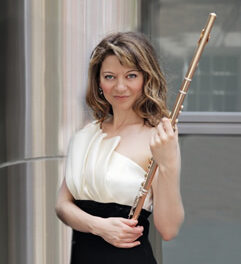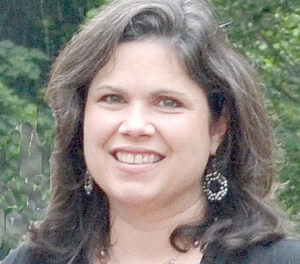There are reasons why certain musical works become part of the “standard repertoire” canon: they are favorites of performers and audiences alike because of their above-average musical appeal. They may or may not be considered “great” works, but nonetheless have that “certain something” which brings them repeated performances and recordings. The audience at St. Michael’s Episcopal Church was treated to three of these works, beautifully played by violinist Brian Reagin with collaborative keyboardists Solomon Eichner, pianist, and Kevin Kerstetter, organist.
The program opened with the Poème, Op. 25, by Ernest Chausson (1855-99), originally for violin and orchestra. It begins with a dialogue between piano and violin, its tonal center wandering poetically (undoubtedly influenced by one of his teachers, César Franck) between major and minor modes as both artists made Chausson’s dream-like melodies sing. As Reagin easily essayed the extended virtuoso passages of double stops and octaves, all in perfect tune, the Poème took on the character of a rhapsody. It was good to hear Reagin’s 1763 Carcassi violin in a more intimate acoustic than the NC Symphony’s Raleigh home, Meymandi Hall, where its tonal beauties are not as easily heard. Eichner perfectly complemented Reagin in this French-Romantic musical offering.
The next work was composed some century-and-a-half before Chausson’s, but is perhaps even better known, even being chosen by Jascha Heifetz to open his New York debut recital in 1920: the Chaconne in G minor by (or at least attributed to) Tomaso Vitali (1663-1745). (There has been debate as to whether or not Vitali composed this work, because it modulates to keys far from its tonal base, an uncommon attribute in Baroque music, but the same could be said for music of Carlo Gesualdo, who was born almost 100 years before Vitali.) While likely played originally by solo violin with harpsichord and ‘cello accompaniment, the four-note chaconne bass-line is well-suited to performance with organ; we heard St. Michael’s organist-choirmaster Kevin Kerstetter undergirding Reagin’s masterful playing of this dynamic music. If a variation or two were slightly “out-of-sync,” it was likely due to the two performers being too far from each other. The overall effect remained excellent however, the organ blending well with the violin. Reagin’s straightforward posture and performing mien let the music flow without histrionics. The Vitale is anything but easy, making his playing a demonstration of the cliché, “he makes it look easy!”
Following intermission, there was another French Romantic treat: César Franck’s best-known chamber-music work, the Sonata in A Major for violin and piano. This is a major work in the repertoire; it has been adapted for ‘cello (and many other instruments) and piano and recorded often by major artists. Illustrating most of Franck’s favorite compositional techniques, its cyclical form employs much imitation and canon, the two instruments playing off each other in the long melodic lines which adorn Franck’s writing.
This four-movement sonata calls for equal virtuosity from both performers. Playing this score for the first time in his still-young career, Eichner absolutely shone, especially in the cascading passagework of the Allegro second movement and in the fiery development section of the closing Allegretto poco mosso. Reagin’s violin reveled in the singing qualities of Franck’s melodies, especially in the lovely pianissimo close of the third movement and the return of the lyrical canonic theme which precedes the rollicking coda in the sonata’s closing moments. Many violinists play this work; perhaps none has played it more beautifully than Brian Reagin.
The entire concert was warmly received by the audience, whose vigorous applause was rewarded with an encore: a hauntingly-beautiful performance by Reagin and Eichner of Jay Ungar’s “Ashokan Farewell.”
Hear this duo again in Southern Pines on March 3. For details, click here.












